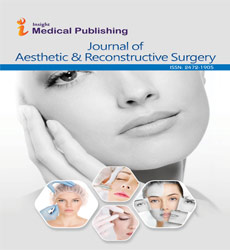Mesenchymal Stem Cells
Patrick Charles*
Published Date: 2025-01-16DOI10.36648/2472-1905.11.1.095
Patrick Charles*
Department of Medicine, Yerevan Haybusak University, Yerevan, Armenia
- *Corresponding Author:
- Patrick Charles
Department of Medicine,
Yerevan Haybusak University,
Yerevan,
Armenia,
E-mail: charlespat@gmail.com
Received date: February 15, 2024, Manuscript No. IPARS-24-18650; Editor assigned date: February 19, 2024, PreQC No. IPARS-24-18650 (PQ); Reviewed date: March 04, 2024, QC No. IPARS-24-18650; Revised date: January 09, 2025, Manuscript No. IPARS-24-18650 (R); Published date: January 09, 2025, DOI: 10.36648/2472-1905.11.1.095
Citation: Charles P (2025) Mesenchymal Stem Cells. J Aesthet Reconstr Surg Vol:11 No:1
Description
Mesenchymal Stem Cells (MSCs) hold tremendous promise in regenerative medicine due to their unique ability to differentiate into various cell types and their potential to promote tissue repair and regeneration. Harvesting MSCs is a critical step in utilizing their therapeutic potential effectively.
MSCs can be found in various tissues throughout the body, including bone marrow, adipose tissue, umbilical cord tissue, and dental pulp. Each source offers its advantages and disadvantages concerning accessibility, yield, and invasiveness.
Bone marrow is one of the most well-known sources of MSCs. The process involves aspirating bone marrow from the iliac crest or other bones under local or general anesthesia. While bone marrow harvesting can be invasive and may cause discomfort, it remains a primary source due to the high concentration of MSCs.
Adipose tissue, commonly known as fat, is another rich source of MSCs. The process involves liposuction to extract fat tissue, followed by isolation of the MSCs. Adipose derived MSCs are abundant and relatively easy to harvest with minimal discomfort to the donor.
Umbilical cord tissue is a valuable source of MSCs obtained from the umbilical cord after childbirth. This method is noninvasive and poses no risk to the donor. However, the yield of MSCs from umbilical cord tissue may be lower compared to other sources.
Dental pulp from extracted teeth is a relatively new but promising source of MSCs. This method allows for the extraction of stem cells from a discarded biological material, reducing ethical concerns and maximizing utility.
Regardless of the source, the process of harvesting MSCs involves isolating and culturing the cells to expand their numbers for therapeutic use. Advanced techniques such as low cytometry and Magnetic-Activated Cell Sorting (MACS) are employed to purify MSC populations and enhance their potency.
Conclusion
In conclusion, MSC harvesting methods vary in invasiveness, yield, and ease of access. Choosing the appropriate source depends on factors such as the patient's condition, ethical considerations, and the intended therapeutic application. As research in regenerative medicine continues to advance, optimizing MSC harvesting techniques remains a crucial area of focus for realizing their full therapeutic potential.Open Access Journals
- Aquaculture & Veterinary Science
- Chemistry & Chemical Sciences
- Clinical Sciences
- Engineering
- General Science
- Genetics & Molecular Biology
- Health Care & Nursing
- Immunology & Microbiology
- Materials Science
- Mathematics & Physics
- Medical Sciences
- Neurology & Psychiatry
- Oncology & Cancer Science
- Pharmaceutical Sciences
